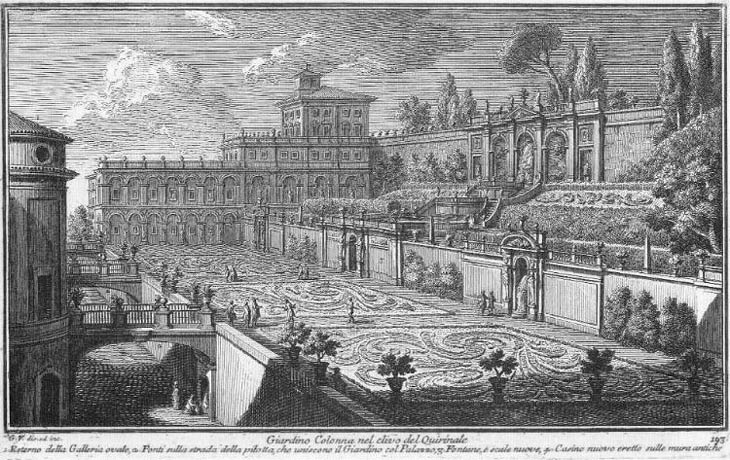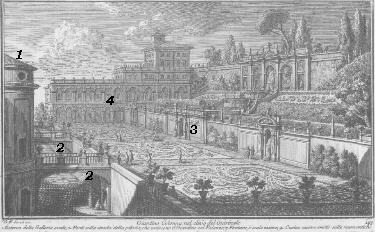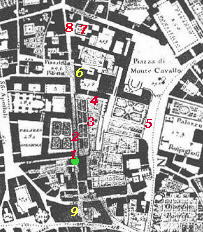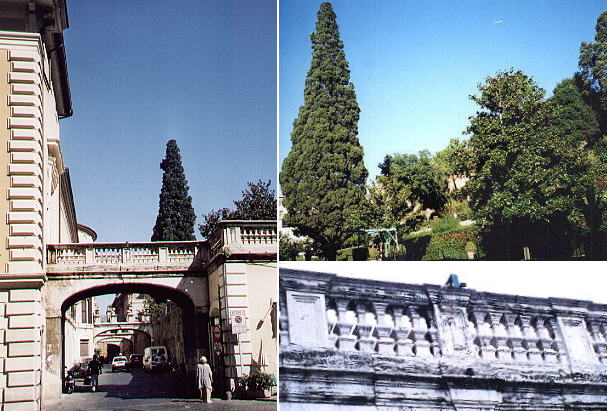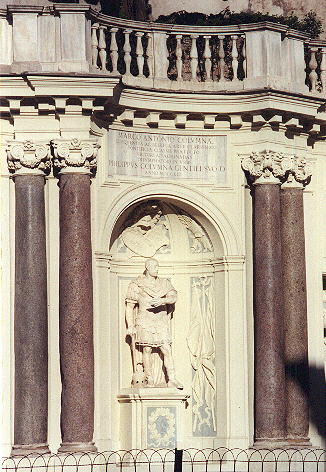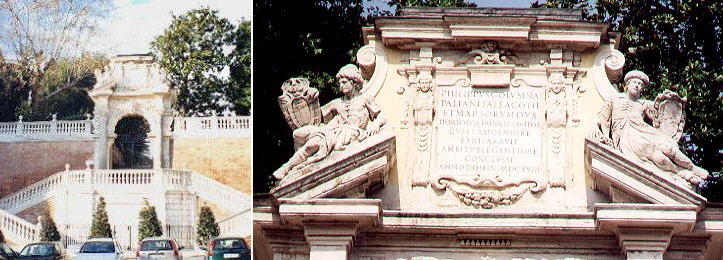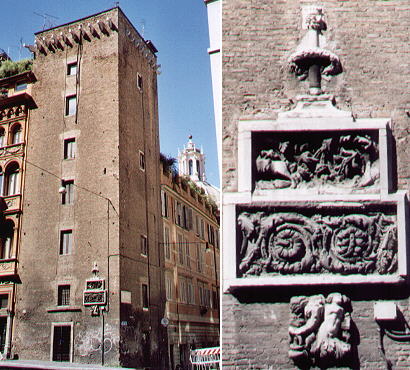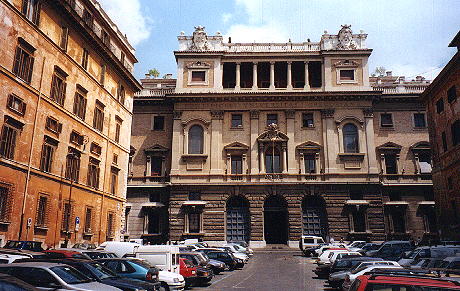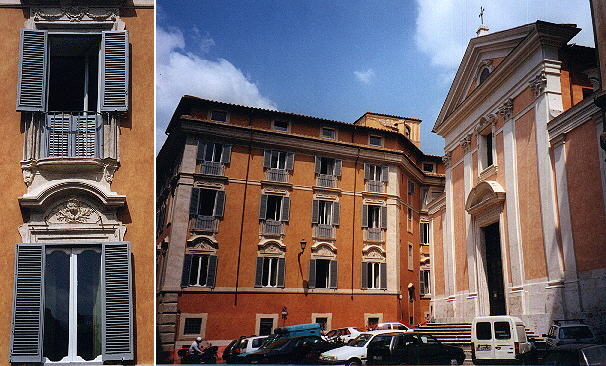  Giardino Colonna nel clivo del Quirinale (Book 10) (Map B3) (Day 3)(View C7) (Rione Trevi) In this page:
The Colonna had their Villa in the backyard of their city palace
(Palazzo Colonna). Four little bridges led from
the palace to the gardens and the Casino built on the slopes of the Quirinale
hill. The view is taken from the green dot in the small 1748 map here below.
In the description below the plate Vasi made reference to: 1) Part of the Palazzo Colonna Oval Gallery;
2) Bridges over Via della Pilotta linking the Palace with the gardens; 3) New fountains and steps; 4) Casino built on Roman walls.
The small map shows also: 5) Entrance from Monte Cavallo; 6) Palazzo Piombino; 7) SS. Croce de' Lucchesi; 8) Palazzo Testa-Piccolomini; 9) Torre Colonna.
The view from the ground is necessarily rather limited and concentrates on Via della Pilotta the little street crossed by the bridges which bear the family symbol. To get a view of what is left of the gardens (part of which was sold) it is necessary to go on the first floor of the buildings on the rear of Palazzo Colonna. One of the remaining decorations of the gardens is a monument to
the family hero, Marcantonio Colonna who fought at Lepanto in 1571.
The gardens have also an independent access near Palazzo del Quirinale. The steps were added at the end of the XIXth century, but the gate goes back to 1618. Two Turkish prisoners (with clear reference to the battle of Lepanto) hold the coat of arms of the Colonna.
The Colonna lived in this area from the XIIth century onward and they built several towers to protect themselves.
The main tower called Torre Mesa was located in the gardens, but it was pulled down at the request of Pope Gregorius XIII (1572-85) as
it spoiled the view over Rome from Palazzo del Quirinale. The only remaining tower of the Colonna's defence system can be
seen in Via Quattro Novembre. It is decorated with the family symbols (column/mermaid) and with some Roman reliefs. The image shows also the tip of SS. Nome di Maria.
Palazzo Piombino e SS.Croce dei Lucchesi
Via della Pilotta leads to Piazza della Pilotta, where the Romans
used to play "la pelota" the basque game played in a walled court with ball
and wicker racket. The building in the photo is the Pontifical Gregorian
University built in the 1930s on the site of Palazzo Piombino. The Gregorian
University was originally in Collegio Romano
which had been founded by Gregorius XIII Boncompagni. The Boncompagni Ludovisi
were also known as Piombino, because the Tuscan town of Piombino and the nearby Island of Elba were
for some time in their possession. This explains the choice of Pius XI
to use Palazzo Piombino to rebuild the university founded by the Piombino's
great pope.
A church existed on this site as early as the IVth century. A larger
church was erected later and is recorded in 1192 as S. Nicola. It was then
incorporated (part of the old church is still visible) in the new church
built between 1575 and 1677 (façade by Mattia de' Rossi). The church was
until 1895 the national church of Lucca (click here for a list of national churches in Rome). The little square is closed by
a nice XVIIIth century palace (designed by Filippo Barigioni), which shows over some windows the five moons
of the Piccolomini (Pius II and Pius III).
Next plate in Book 10: Disegno dell'Anticaglia nel Giardino Colonnese Next step in Day 3 itinerary: Monastero delle Vergini Next step in your tour of Rione Trevi: Palazzo Colonna Go
to |
All images © 1999 - 2003 by Roberto Piperno. Write to romapip@quipo.it
